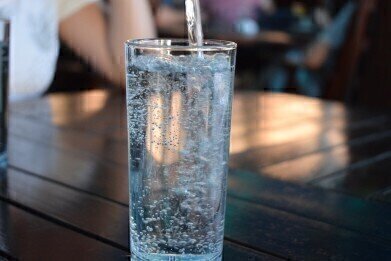Water/Wastewater
What Are the Limits for Pollutants in Bottled Water?
Sep 27 2022
With up to 80% of our bodies made from water, it’s a precious resource upon which we all depend for survival. Humans cannot live without drinking water for more than a couple of days, so ensuring everyone has access to clean water that is safe to drink is a basic right. Water which comes out of the tap in the UK is subjected to rigorous testing protocols on a regular basis to keep it free from pollution.
Most people would expect that bottled water would be held to even higher standards; after all, buying bottles of water from a supermarket can be up to 2,000 times more expensive than drinking it at source. But what actually are the limits on pollutants in bottled water in Great Britain? Is it as safe to drink as we assume? We take a deeper dive into the subject below.
By the numbers
The British government requires that all producers of bottled water test their water on a regular basis and ensure it complies with legal limits for chemical, microbiological, pesticides and radioactive substances. Here are those categories and the limits on the pollutants found within them broken down in greater detail:
Chemical limits
|
Acrylamide |
0.10 micrograms per litre |
|
Antimony |
5 micrograms per litre |
|
Arsenic |
10 micrograms per litre |
|
Benzene |
1 micrograms per litre |
|
Benzo(a)pyrene |
0.01 micrograms per litre |
|
Boron |
1 milligrams per litre |
|
Bromate |
10 micrograms per litre |
|
Cadmium |
5 micrograms per litre |
|
Chromium |
50 micrograms per litre |
|
Copper |
2 milligrams per litre |
|
Cyanide |
50 micrograms per litre |
|
1,2 dichloroethane |
3 micrograms per litre |
|
Epichlorohydrin |
0.10 micrograms per litre |
|
Fluoride |
1.5 milligrams per litre |
|
Lead |
10 micrograms per litre |
|
Mercury |
1 micrograms per litre |
|
Nickel |
20 micrograms per litre |
|
Nitrate |
50 milligrams per litre |
|
Nitrite |
0.5 milligrams per litre |
|
Polycyclic aromatic hydrocarbons |
0.1 micrograms per litre |
|
Selenium |
10 micrograms per litre |
|
Tetrachloroethane and trichloroethane |
10 micrograms per litre |
|
Trichloromethanes |
100 micrograms per litre |
|
Vinyl chloride |
0.50 micrograms per litre |
Microbiological bacteria limits
|
Escherichia coli |
0 per 250 ml |
|
Enterococci |
0 per 250 ml |
|
Pseudomonas aeruginosa |
0 per 250 ml |
|
Faecal streptococci |
0 per 250 ml |
|
Sporulated sulphite-reducing anaerobes |
0 per 250 ml |
|
Total viable colony count (TVC) after 72 hours at 22°C |
100 per ml |
|
TVC after 24 hours at 37°C |
20 per ml |
Pesticide limits
|
Aldrin |
0.030 micrograms per litre |
|
Dieldrin |
0.030 micrograms per litre |
|
Heptachlor |
0.030 micrograms per litre |
|
Heptachlor epoxide |
0.030 micrograms per litre |
|
Other individual pesticides |
0.10 micrograms per litre |
|
Total pesticides |
0.50 micrograms per litre |
Radioactive limits
|
Radon |
100 becquerels per litre |
|
Tritium |
100 becquerels per litre |
|
Indicative dose |
0.10 millisievert per litre |
Forever chemicals
Although the above contaminants are fairly tightly controlled in both tap and bottled water, there has been mounting concern over levels of so-called “forever chemicals”. Formally known as per- and polyfluoroalkyl substances (PFAS), this group of thousands of chemicals do not degrade in the atmosphere or in the human body, thus potentially accumulating to dangerous concentrations over time.
At present, UK law requires that water companies must only take steps to reduce the amount of PFAS in their product when it exceeds 100 nanograms per litre. Healthcare professionals must be consulted if the levels exceed 10 nanograms per litre, but even this is far higher than the European threshold of 2.2 nanograms per litre, fuelling fears that the UK is falling behind its continental peers with regard to drinking water safety.
Digital Edition
IET 34.2 March 2024
April 2024
Gas Detection - Biogas batch fermentation system for laboratory use with automatic gas analysis in real time Water/Wastewater - Upcycling sensors for sustainable nature management - Prist...
View all digital editions
Events
Apr 30 2024 Melbourne, Australia
Apr 30 2024 Birmingham, UK
May 03 2024 Seoul, South Korea
May 05 2024 Seville, Spain
May 06 2024 Minneapolis, MN, USA


















